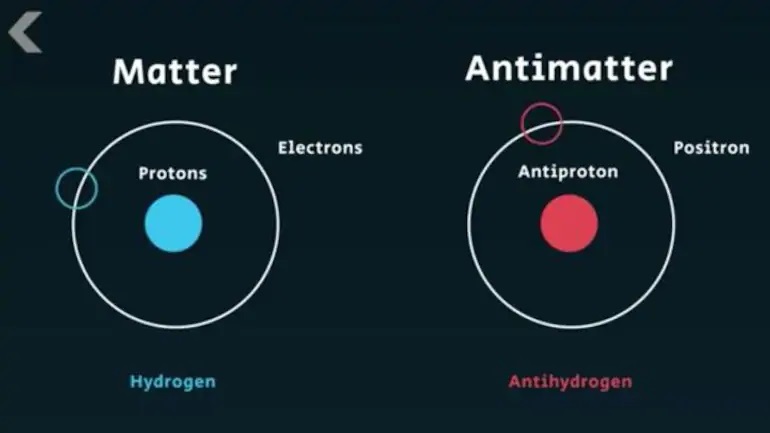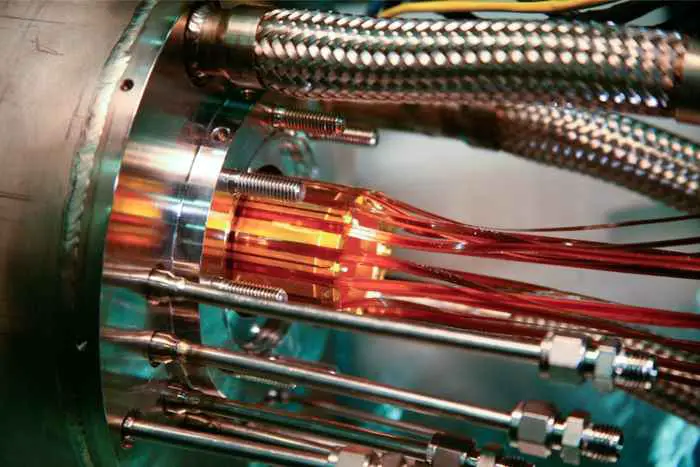Antimatter: Most Dangerous and Expensive Thing in the World

In this comprehensive article, we delve deep into the enigmatic world of antimatter, exploring its unique properties, extraordinary energy potential, mind-boggling cost, and its intriguing presence in both the cosmos and our everyday lives.
What is Antimatter?
Definition and Characteristics
Antimatter is a mysterious substance composed of antiparticles, which are the counterparts of ordinary matter particles, such as electrons and protons. The defining characteristic of antimatter is its opposite charge when compared to regular matter.
For instance, while electrons carry a negative charge, their antimatter counterparts, known as positrons, bear a positive charge.
Antiparticles and Opposite Charge
The concept of antiparticles was first introduced by British physicist Paul Dirac in the 1920s when he formulated the Dirac equation. This groundbreaking theory predicted the existence of antiparticles and opened the door to the exploration of antimatter.
Antiparticles possess not only opposite charges but also opposite spin, making them mirror images of their matter counterparts.

The Explosive Potential of Antimatter
Energy Release Comparison
One of the most intriguing aspects of antimatter is its immense energy potential. When a gram of antimatter comes into contact with a gram of its corresponding matter, a cataclysmic event unfolds, releasing a staggering amount of energy (4.184 x 1012 Joules).
To put this in perspective, the energy produced by this collision is approximately 40% of the energy released during the detonation of the Hiroshima atomic bomb.
Destructive Force
Consider the destructive force of an antimatter weapon if even a single gram possesses this capability.
The controlled utilization of antimatter’s energy potential has long been a subject of scientific fascination and concern, as harnessing this power could revolutionize energy production or pose unprecedented threats.
The Astonishing Cost of Antimatter
Antimatter’s Price Tag
Apart from its explosive potential, antimatter is also known for its jaw-dropping cost. The price per gram of antimatter is an astonishing 62.5 trillion dollars.
To put this number into perspective, the combined GDP of all countries on the planet is $91 trillion dollars. Antimatter’s exorbitant cost raises questions about its feasibility for practical applications.
Perspective: Antimatter vs. Global GDP
The cost of antimatter highlights its rarity and the immense challenges involved in its production and containment. Exploring the reasons behind this astronomical price tag is essential to understanding the complexities of antimatter research and applications.
Natural Occurrences of Antimatter
Lightning and Cosmic Rays
Surprisingly, antimatter is not solely a creation of laboratories. It exists in our natural world, albeit in minuscule quantities. Lightning strikes, cosmic rays, and solar flares are some of the natural phenomena that produce antimatter particles.
These occurrences offer a glimpse into the fundamental processes that give rise to antimatter in the universe.
Solar Flares and Aurora
Additionally, solar flares and the mesmerizing auroras that grace our polar skies also involve the interplay of matter and antimatter.
Understanding these natural sources of antimatter provides valuable insights into the cosmic abundance of this enigmatic substance.

image: whatifshow
“There could be whole antiworlds and antipeople made out of antiparticles. However, if you meet your antiself, don’t shake hands! You would both vanish in a great flash of light.”
Stephen Hawking, A Brief History of Time
( Click to Tweet this Quote )
Theoretical Applications of Antimatter
Space Travel and Propulsion
The potential applications of antimatter are not confined to destruction. Scientists have long speculated about its use in space travel and propulsion.
Due to its energy density, a small amount of antimatter could propel spacecraft at incredible speeds, potentially enabling interstellar exploration.
However, this remains a theoretical concept, as the practical challenges of antimatter storage and energy production are substantial.
Medical Applications
Antimatter also holds promise in the field of medicine. Positron Emission Tomography (PET) scans utilize positrons, the antimatter counterparts of electrons, to create detailed images of the human body’s internal structures.
This medical imaging technique has revolutionized diagnostics, offering valuable insights into conditions such as cancer and neurological disorders.
The Challenges of Antimatter Production
Energy Requirements
Producing antimatter is no small feat. It requires an immense amount of energy, making its production costly and energy-intensive.
Current methods involve particle accelerators, which consume substantial amounts of electricity and resources.
Storage and Containment
Another significant challenge is the storage and containment of antimatter. Due to its explosive nature upon contact with matter, antimatter must be kept in specialized containers with strong magnetic fields to prevent contact.
The development of efficient and safe antimatter storage solutions remains an ongoing area of research.
Ethical and Safety Concerns
Regulatory Measures
The potential for antimatter to be used destructively or irresponsibly has led to the establishment of strict regulatory measures.
International agreements and organizations are in place to monitor and control antimatter research and production, with a focus on preventing misuse.
Potential for Weaponization
The idea of antimatter weapons has fueled both science fiction and real-world security concerns. While harnessing antimatter as a weapon is highly challenging due to containment issues, the potential consequences are severe.
Safeguarding against the misuse of antimatter is a paramount ethical and safety consideration in the world of scientific research.

image: NIELS MADSEN, ALPHA/SWANSEA/CERN
The Hunt for Antimatter in the Universe
Cosmic Sources
Scientists are actively searching for natural sources of antimatter in the universe. Cosmic phenomena, such as supernovae and pulsars, are believed to be potential sources of antimatter production.
The detection of these elusive particles in cosmic rays provides clues about the processes that generate antimatter beyond our planet.
Future Space Missions
Future space missions aim to explore antimatter in the cosmos more directly. Proposals for spacecraft equipped with antimatter detectors are in development, with the goal of understanding the prevalence and distribution of antimatter in our galaxy and beyond.
These missions could reshape our understanding of the universe.
Antimatter in Popular Culture
Science Fiction and Misconceptions
Antimatter has captured the imagination of science fiction writers and filmmakers for decades. It often appears as a powerful and exotic energy source or a formidable weapon.
While these portrayals add to the intrigue of antimatter, they can also perpetuate misconceptions about its practicality and ease of use.
Distinguishing between science fiction and scientific reality is crucial for a well-rounded understanding of antimatter.

(Angels & Demons)
The Future of Antimatter Research
Advancements and Possibilities
As we peer into the future of antimatter research, several exciting advancements and possibilities emerge on the horizon:
- Improved Production Methods: Scientists are continually working on more efficient methods to produce antimatter, aiming to reduce costs and energy requirements.
- Storage Innovations: Research into innovative storage solutions, such as advanced magnetic confinement techniques, may pave the way for safer and more practical antimatter applications.
- Space Exploration: Antimatter could play a pivotal role in the future of space exploration. Propulsion systems utilizing antimatter may enable faster and more ambitious missions to distant planets and even other star systems.
- Medical Breakthroughs: Antimatter’s use in medical imaging is likely to expand. It could lead to more precise diagnostics and improved treatments for a range of diseases.
- Energy Revolution: Although challenging, harnessing antimatter’s energy potential for civilian use remains a long-term goal. If achieved, it could transform global energy production and provide a clean, highly efficient energy source.
- Cosmic Mysteries: Antimatter detectors on spacecraft could help unravel cosmic mysteries, such as the prevalence of antimatter in distant galaxies and the role it plays in the universe’s evolution.
- Ethical Considerations: Ethical discussions around antimatter will intensify as its potential applications evolve. Striking a balance between scientific progress and responsible use will be essential.
As we continue to push the boundaries of our understanding and capabilities, antimatter remains a tantalizing frontier in scientific exploration, offering both promise and challenges.
In the realm of scientific exploration, few topics are as captivating as antimatter. Its mysterious properties, explosive potential, and astronomical cost have made it a subject of both wonder and concern. From the laboratory to the far reaches of the cosmos, antimatter continues to challenge our understanding of the universe and the limits of human ingenuity.
As we look ahead, the future of antimatter research holds promise for groundbreaking advancements in energy, space travel, medicine, and our understanding of the cosmos. Yet, it also demands responsible stewardship, as the power of antimatter raises ethical and safety considerations that must be carefully navigated.
Antimatter stands as a testament to the boundless curiosity of humanity and the pursuit of knowledge that drives us to explore the most enigmatic corners of the universe.
READ MORE
Frequently Asked Questions (FAQs)
Can antimatter be used as a clean energy source?
While antimatter has incredible energy potential, its practical use as a clean energy source faces significant challenges, primarily due to the difficulties in production, storage, and containment.
How is antimatter produced in the laboratory?
Antimatter is typically produced in particle accelerators, where high-energy collisions generate tiny amounts of antimatter particles. These particles are then carefully collected and stored.
What are the implications of antimatter for space exploration?
Antimatter’s energy density makes it a compelling candidate for future space propulsion systems, potentially enabling faster and more ambitious space missions.
Is antimatter storage a real challenge?
Yes, antimatter storage is a significant challenge. Antimatter must be stored in specialized containers with strong magnetic fields to prevent contact with matter.
Could antimatter be harnessed as a weapon?
Theoretically, antimatter could be used as a powerful weapon. However, the practical challenges of containment make this a highly complex and unlikely scenario.
